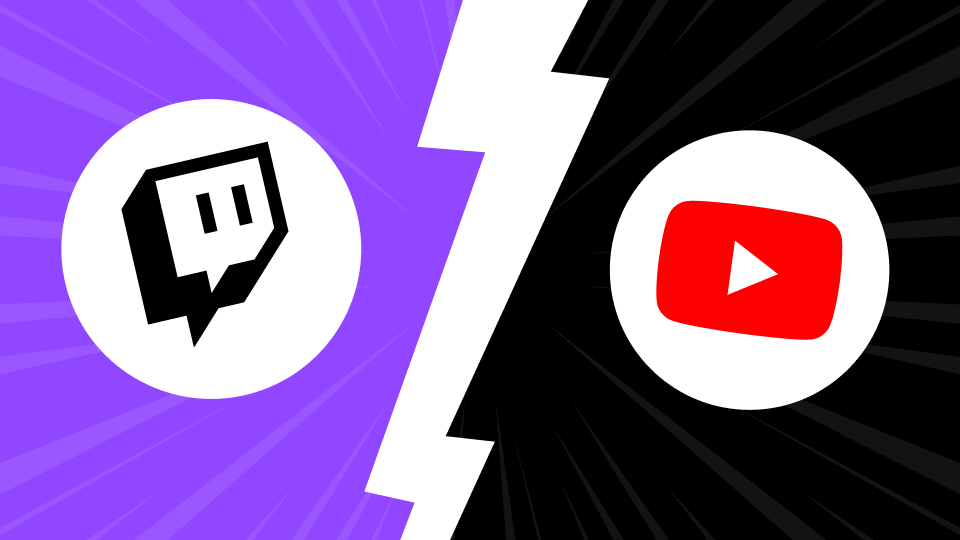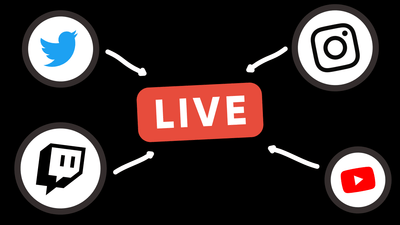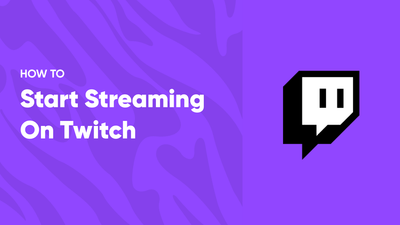
Key Differences Between Twitch and Youtube
The main difference between Twitch and Youtube is clearly the type of content that people primarily associate with the platforms. Twitch first comes to mind for live streaming and is known for content built around video games. YouTube had long been perceived as a platform only for pre-recorded videos, though it changed in 2017 when its live-streaming functionality was officially introduced after years of experiments. While Twitch is distinguished by its downright close-knit community, YouTube excels in helping people to see a visible return on their work faster, thanks to its search engine and, therefore, larger discoverability and viewing potential.
In general, these two platforms share plenty of similarities. Still, they have significant differences as well, let's cover them to ease your decision about where you should stream below.
Community Guidelines
As already noted, Twitch is focused solely on live-streaming, leading to enhanced leniency for creators and their videos. As it's harder to manage live content, Twitch doesn't go the extra mile with its community guidelines and lets you breathe a sigh of relief compared to YouTube's endless terms and policies. Despite being seemingly indulgent, Twitch has no problem automatically banning even partner accounts with no clear explanation, while YouTube works with a three-strike system. The general rule of thumb for both platforms is no copyright violations, no self-destructive behavior, no violence, no sexually suggestive content, and no hateful conduct. Bear this in mind before making any content to be less likely to find that you're banned on Twitch or have a strike from YouTube.
Content
Twitch is a live broadcast platform that attracts viewers mostly interested in gaming. It gradually becomes more diverse because new categories such as Just Chatting, Art, and Music are being introduced regularly. Still, you should be aware that the strongest chances of growth ultimately belong to gaming-related content as the most prominent Twitch niche.
Another issue lies in the fact that Twitch has no evergreen content because there's simply no tradition of watching old stuff there, and your creative heritage disappears after a few days. So it would help if you thought of how to share your videos on other platforms to have stable earnings from your previous content.
As a blend of streams and pre-recorded content with vastly assorted categories, YouTube has a competitive advantage over Twitch. Moreover, its algorithms favor streaming over regular videos (it's still far from perfect, though), so you have more freedom regarding the choice of your channel's topics and a bonus in the form of higher audience engagement and a bigger lifetime value of your old content.
Discoverability
One of the most significant distinctions between Twitch and YouTube is discoverability and, as a consequence, growth. Twitch lacks an algorithm to promote your content to potential viewers and sorts channels based on the number of active viewers. Thus new creators end up at the bottom of the list unless they're ready to move mountains to get noticed. But at the same time, a close-knit community is a coin to Twitch's piggy bank. Viewers admire engaging with creators and sharing their favorites through word of mouth, helping them grow and develop.
YouTube's algorithm offers smaller creators a prospect to be discovered, multiplying your chances of success. Millions of users look for content daily and see all your public videos by default, at any time of the day or night.
As a result, YouTube has the advantage regarding video discoverability for newbies, thanks to their search engine optimization, while Twitch supports creators with the possibility to gain a bigger following. But if you're considering YouTube as a platform solely for live content, be aware that their stream discoverability is not very good at this moment - even though the platform gets regular to its live streaming section, it's still a bit hard to find, and get notified about streams of your favorite content creators.
Monetization and Partnership
Both platforms can boast a wide range of monetization methods, and it's impossible to give an unequivocal answer to whether Twitch or YouTube is more beneficial. Let's analyze ways of income for each site to boost your potential revenue, given all the pros and cons.
For Twitch, consider becoming a Twitch Affiliate or Twitch Partner. Compared with YouTube, to put simply, the platform has less strict requirements for both types of partnership, and reaching the Affiliate program seems like a fairly easy task. However, popularizing your channel to the level where you can earn decent revenue is an entirely different story. You'll be able to run advertising only as a Twitch Partner, so make sure you don't stop on the Affiliate program and conquer the Partnership level to get the most out of Twitch. Besides these programs, streamers earn money in several additional ways, including paid subscriptions, ad revenue, midstream advertisements, bits, donations, and much more. To learn more about other possible income sources, read our article on how to make money on Twitch.
Starting point for monetization on YouTube is substantially higher, and there's only one type of YouTube Partner Program, which requires you to either get 1000 subscribers with 4000 valid public watch hours in the last 12 months or get 1,000 subscribers with 10 million valid public Shorts views during the previous 90 days.
If you meet the criteria and reach the YouTube Partnership Program, congrats because it's your leverage! YouTube uses Google's Adsense Contextual Advertising, and the income ratio for creators is at 55% in most cases. At the same time, Twitch offers only inline ads that can't withstand the standard AdBlock app and recently launched Ad Incentive Program, which still has its drawbacks, but has already been promised to be improved shortly.
Returning to YouTube, in addition to Ad revenue, direct income methods include channel memberships, Super Thanks, Super Chat, Super Stickers, and YouTube Shorts Fund.
While you're making up your mind considering the benefits of the two competitors mentioned above, a friendly reminder: sponsorship deals, selling merchandise, affiliate marketing, and third-party subscription-based services are great external sources that may help you multiply your monthly income, and you're free to use them on Twitch, YouTube or both platforms at the same time.
Why are Streamers Leaving Twitch?
You've probably heard countless opinions that Twitch's time has come to an end and the platform is not as good as it used to be anymore, but is it indeed true?
Even last year, many Twitch streamers, from small ones to the site's famous faces, had to take a break or switch the platform because they were distressed by Twitch's algorithm and countless other drawbacks. Even though we all genuinely love Twitch as it is, burnout comes to mind as a synonym for its culture because you need to put in a lot of blood, sweat, and tears to win the audience's favor and linger at the top. In light of the lower revenue split announcement, mentioned by a new Twitch CEO, Dan Clancy, many creators are pondering over the chances to prevent holes in a budget because 50/50 instead of the previous 70/30 hits differently. The alternative in the form of the Ad Incentive Program, introduced with the revenue changes, could be the light at the end of the tunnel, but for now, it's not. Platform's most prominent creators aren't quite optimistic about innovations because the balance between commercials and the actual stream content still leaves much to be desired. So, in light of recent developments, content creators search for alternatives that might be a better shot at getting more revenue and a better experience in general.
If you are afraid of dealing with innovations, it's okay, but the idea of moving to another platform sounds and definitely is challenging. Whichever option you choose, from YouTube or Facebook Gaming to TikTok Live, there will always be some hitches you'll have to deal with. However, it's always great to have a backup just in case, and you can check out other Twitch competitors besides YouTube and consider their pros and cons. Whether you believe that idea of moving to any other platform is viable or you have doubts about Twitch's future, don't count it out. We're witnessing the usual process of progress involving trial and error, and that's exactly why we have the opportunity to see the growth.
Summary
Twitch vs. YouTube is an everlasting battle that hopefully will have no clear winner because such competition guarantees that we will see new large feature improvements and attractive conditions, new aspiring creators, and more effort from both sides. So, for now, pay attention to your needs and preferences to choose your personal number one or multistream to take the best of Twitch and YouTube and overcome the endless dilemma.




